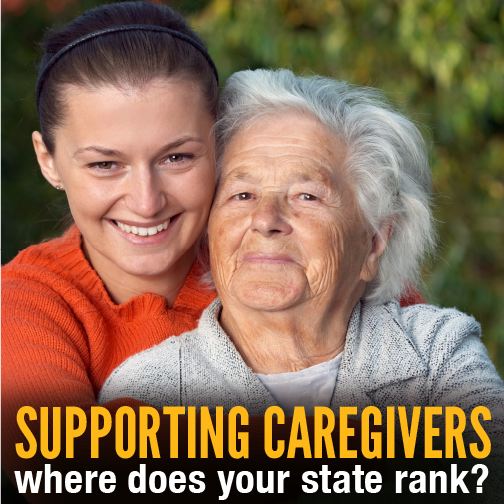AARP Eye Center

"The news is mixed. Maryland has been working to improve the balancing of services away from nursing homes and towards home and community based services, the setting that most people prefer. But more improvement is needed," said Hank Greenberg, state director for AARP Maryland, which serves more than 870,000 AARP members age 50 and older in Maryland.
Maryland ranks in the bottom quartile in balancing spending on institutional care rather than home and community-based services. It also ranked particularly low (49th in the nation) on participant direction, which refers to letting people hire their own workers and set their own hours. Giving people the choices they want to stay at home and decide who provides care are important components of a good long-term care system.
Maryland also came in at 33rd in the nation in support for family caregivers. The state performed well on nurse delegation of health maintenance tasks--meaning some medical caregiving tasks can now be done by paid home care workers--saving working family caregivers from having to leave work to help a family member. But much more needs to be done to protect working caregivers, such as offering paid sick days and expanding the ability of workers to take time off to provide care .
“The vast majority of older Marylanders want to live independently, at home, as they age--right now, most are doing so with the help of unpaid family caregivers,” said Greenberg. “Even facing tight budgets following the Great Recession, Maryland is making progress to help our older residents age at home. However, this Scorecard shows we have more to do, and we don’t have time to stand idle.”
Today, unpaid family caregivers provide the bulk of care for older Marylanders in part because the cost of long-term care remains unaffordable for most middle income families. In Maryland, more than 770,000 residents help their aging parents, spouses, and other loved ones stay at home by providing assistance with bathing and dressing, transportation, finances, complex medical tasks like wound care and injections, and more. The value of this unpaid care totals about $8 million per year.
“When it comes to helping older Marylanders live in the setting of their choice, this silent army of family caregivers assumes the lion’s share of responsibility,” explained Greenberg. “Many juggle full-time jobs with their caregiving duties; others provide 24/7 care for their loved ones. With every task they undertake, these family caregivers save the state money by keeping their loved ones out of costly nursing homes – most often paid for by Medicaid. They have earned some basic support.” According to the state Scorecard, many family caregivers face a degree of stress and worry and Maryland needs to take action.
This past legislative season, AARP Maryland fought for a bill that would have required Governor O'Malley to appoint a task force to identify policies, resources, and programs available for family caregivers, and will continue to raise this issue in 2015.
Raising Expectations 2014: A State Scorecard on Long-Term Services and Supports for Older Adults, People with Physical Disabilities, and Family Caregivers – an update of the inaugural 2011 Scorecard – ranks each state overall and within 26 performance indicators along five key dimensions: affordability and access, choice of setting and provider, quality of life and quality of care, support for family caregivers, and effective transitions.
New indicators this year include length of stay in nursing homes and use of anti-psychotic drugs by nursing homes, which raises serious concerns about the quality of institutional care.
"In just 12 years, the leading edge of the Baby Boomer Generation will enter its 80s--placing new demands on a still imperfect long-term care system," said Greenberg. "This Scorecard gives us a snapshot of how well Maryland serves our older residents, those with disabilities, and family caregivers – and shows us where we must sharpen our focus to better assist hardworking Marylanders. Now is the time for policymakers to act."
Read more about Maryland's 2014 scorecard and view the Maryland 2014 fact sheet, or visit longtermscorecard.org for data on the performance of every state.























































